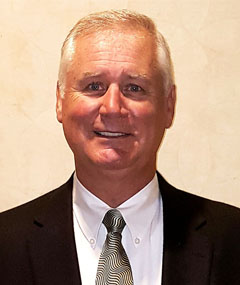Retirement planning may sound boring today, but when your working years are done and dusted – you will thank yourself for planning and securing a fun and comfortable retired life. After decades of working and earning, when you see retirement on the horizon – it's time to think of your retirement goals and how long you have to fulfill them. Retirement planning not only means saving up money, but it is also essential to invest your savings in the right place to help it grow. Building a substantial financial cushion for your golden years helps you meet your retirement goals, your expenses and minimize the retirement tax hit.
Making a Retirement Plan: Where to Start?
Everyone has different retirement goals and different levels of income. Therefore, it is natural that everyone has no one right plan. Planning your retirement depends entirely on when you want to retire, how much you want to save, and what you see yourself doing in your golden years. Careful planning for retirement is likely to save you many hassles in the future. Here are some essential points to keep in mind –
1. When to Start Retirement Planning?
The right time to retire depends on your current age and your expected retirement age. The longer you have, the greater risk your portfolio can withstand. Let's say you begin retirement planning in your 30's; you can easily afford to have the majority of your assets in riskier investments such as stocks.
The next question is – "When will I have enough money saved to replace the income I receive from working?"It would help find investment opportunities that outpace inflation to answer this question. Create a multi-stage retirement plan that accounts for inflation, integrates the different time horizons and corresponding liquidity needs to find an optimal allocation.
2. How Much Money Do You Need to Retire?
The best way to calculate the amount of money you need to retire is to think of it as a function of your current income and expenses. Don't forget to consider the changes in your costs with retirement.
It always helps to keep realistic expectations about your post-retirement spending habits. If you plan to splurge on travel or are yet to pay off your mortgage –you must plan for expenses equivalent to your current costs. It is also helpful to keep some money aside for unforeseen medical expenses.
3. Prioritize Your Financial Goals
You may have more than one financial goal after retirement. Prioritize these goals according to significance or urgency and plan to tackle them one at a time. Aim to start building a retirement fund simultaneously as you start building an emergency fund. There will always be other expenses, so decide the contribution amount depending on the additional costs you currently bear.
4. Decide Your Post-Retirement Address
Where you live post-retirement profoundly impacts your expenses. Let's say you live in a prime residential area in the heart of the city right now. After retirement, if you sell your apartment and begin to live in a low-tax state – it can help you reduce your expenses. You can free up a part of your income to pay for other priorities. You could also consider moving to a smaller apartment that costs lesser to maintain. On the other hand, you may want to live closer to children or grandchildren in a big city – and will need to budget according to that.
5. Take Full Advantage of Retirement Accounts& Catch-up Contributions
Increase your retirement contributions up to the maximum allowed in your self-directed 401(k) when you have some surplus savings. Aim to put enough into your 401(k) to qualify for any maximum matching contribution that your employer offers. For those 50 years or older, rules for catch-up contribution let you set aside more than the regular contribution. As you near retirement, consider account consolidation, including combining self-directed IRAs with one institution.
6. Make Sure You Understand Your Employer's Pension Plan Thoroughly
Check out your employer's pension plan and make sure you understand all the details. If you are covered under a traditional pension plan, read the fine print to know how it works. Your employer can provide you with an individual benefit statement, so you can see what your benefit is worth. While changing employers, it is imperative to see what will happen to your pension benefit when you leave. You may also be entitled to benefits in your spouse's pension plan.
7. Make Sure You are Diversified and Investing for Growth
The total amount you save depends on where you invest and how much inflation affects your savings. Ask questions about how your retirement fund is invested and what impacts your money's growth. Diversify your investments to reduce risks and improve returns. Financial security and knowledge go hand-in-hand.
8. Downsize Your Debt
It is always good to pay off all your debts before you retire. That way, you can minimize the amount of interest payments after retirement. Understand the rate at which you pay your mortgage and accelerate it if needed.
9. Future Medical Costs
As you get older, your healthcare costs are likely to rise. Even though most of your routine healthcare expenses are covered by Medicare, keeping supplemental coverage is helpful to pay for your non-routine healthcare expenses. Buying healthcare coverage early on in life keeps your premiums low, and there is a lesser chance of getting rejected by insurers. Consider putting maximum contribution in your medical savings account. It not only gives you tax advantages but also accumulates tax-free until needed during retirement.
10. Calculate the After-tax Rate of Investment Return
Once you are sure of the time horizons and spending requirements, calculate the real after-tax rate of return to assess the feasibility of the portfolio. As you age, the return is likely to fall because low-risk investment portfolios usually comprise low-yielding fixed-income securities.
Retirement planning is an essential aspect of securing your future. Most people prefer to plan individually than rely on employer-provided defined benefit pension. Striking a balance between realistic return expectations and a desired standard of living may be a challenge. But efficient planning and a diversified portfolio may help you achieve all your retirement goals. Don't forget to reflect on changing market conditions and modify your portfolio accordingly.
 Author bio: Rick Pendykoski is the owner of Self Directed Retirement Plans LLC, a retirement planning firm based in Goodyear, AZ. He regularly writes for his own blog of Self Directed Retirement Plans and as a guest blogger to many sites in the niche of finance. If you need help and guidance with traditional or alternative investments, email him at rick@sdretirementplans.com or visit www.sdretirementplans.com.
Author bio: Rick Pendykoski is the owner of Self Directed Retirement Plans LLC, a retirement planning firm based in Goodyear, AZ. He regularly writes for his own blog of Self Directed Retirement Plans and as a guest blogger to many sites in the niche of finance. If you need help and guidance with traditional or alternative investments, email him at rick@sdretirementplans.com or visit www.sdretirementplans.com.



Leave Comment